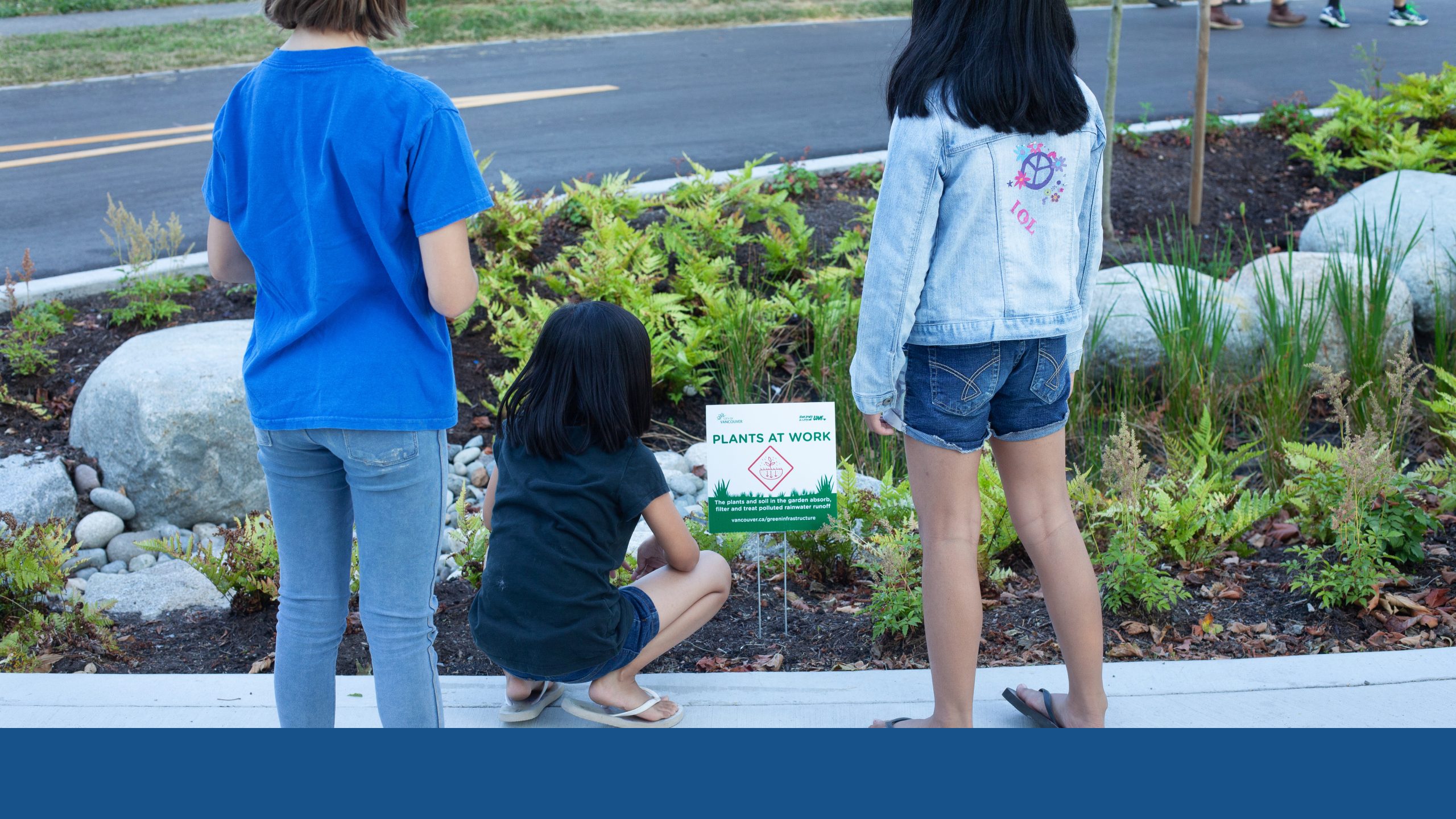10. Watersheds & Water Resources
Our Vision: Vancouver has resilient water, sewer, and drainage systems that restore natural watershed functions, adapt to climate change, and serve communities equitably.

Vancouver is located in a temperate rainforest surrounded by water—from our Fraser River shoreline and coastal waters of the Salish Sea, to the rain that falls from our skies.
Local Indigenous communities have valued, celebrated, and relied upon sustainable water management practices for millennia. Since the arrival of the settlers, urban development has disrupted the water cycle, degraded natural systems, and eliminated important natural assets. Old growth forests that absorb excess water were cleared, creeks that slow and store water flow were buried, wetlands that treat water and support our ecosystems were drained, and the building of a combined sanitary and stormwater pipe system with limited capacity results in frequent spills of polluted water in our surrounding environment.
Directions and Policies

Direction 10.1: City-Wide Water Resource Planning
Take a holistic approach to managing all water resources and improving the health of the aquatic environment.
Development has dramatically altered the water systems, and management practices have polluted local waterbodies and aquifers. In addition, climate change will continue to create challenges in the years to come. A watershed-based planning approach recognizes that healthy water systems are important for a thriving urban environment and all forms of water are interconnected.
The Healthy Waters Plan – Adapting and Integrating Sewage & Rainwater Management in Vancouver (underway), is under development in partnership with the Nations and Metro Vancouver, and will guide sewage and rainwater management policy, advocacy and strategic long-range investments. The plan drivers include water quality, climate adaptation, aging infrastructure, combined sewer overflows and stormwater runoff pollutants, affordability, and population growth.
Policies
| 10.1.1 | Use a watershed based planning approach when considering infrastructure investments, land use changes, and growth servicing, guided by the Healthy Waters Plan. |
| 10.1.2 | Protect and manage groundwater by minimizing contamination, enhancing recharge, and ensuring sustainable use of the resource. |
| 10.1.3 | Build and maintain a water distribution system that is resilient, sustainable and makes drinking water and fire protection accessible to all as the city grows. |
The Healthy Waters Plan – Adapting and Integrating Sewage & Rainwater Management in Vancouver, is under development and will guide sewage and rainwater management policy, advocacy and strategic long-range investments. The plan drivers include water quality, climate adaptation, aging infrastructure, combined sewer overflows and stormwater runoff pollutants, affordability, and population growth.

Direction 10.2: Manage Water on Boulevards, Sidewalks, and Streets
Manage water on public property to address climate change risks and achieve associated co-benefits.
Climate change impacts, including heat island effects, droughts, flooding and sea level rise, are worsening the inequity and affordability of the City’s water management systems. This calls for a shift in planning and providing services to communities, primarily the use of public land to manage rainwater closer to where it falls, while enhancing ecosystems and public spaces.
Policies
| 10.2.1 | Reallocate parts of the public right-of-way (e.g., streets and sidewalk areas) to expand the breadth and scale of nature- based assets such as green rainwater infrastructure. |
| 10.2.2 | Develop a city-wide blue green network of connected park-like streets that manage rainwater, support climate adaptation and biodiversity, and create public space opportunities. |
| 10.2.3 | Restore, maintain, and maximize the use of existing natural creeks, streams, and drainage assets. |

Direction 10.3: Make Space for Water in Buildings and on Sites
Manage stormwater and optimize drinking water use on private property.
Private property can play a key role in managing all forms of water in the urban water cycle. Building-scale tools, such as harvest and reuse systems, capture rainwater while offsetting drinking water use. On a larger scale, stormwater management approaches, such as wetlands, manage rainwater while enhancing the community and improving ecology.
Policies
| 10.3.1 | Develop land acquisition plans and design guidelines to create room for natural buffers, green rainwater infrastructure and water-adaptive public spaces. |
| 10.3.2 | Promote and accelerate the implementation of building-scale drinking water conservation and offsetting, rainwater management, and groundwater protection tools. |

